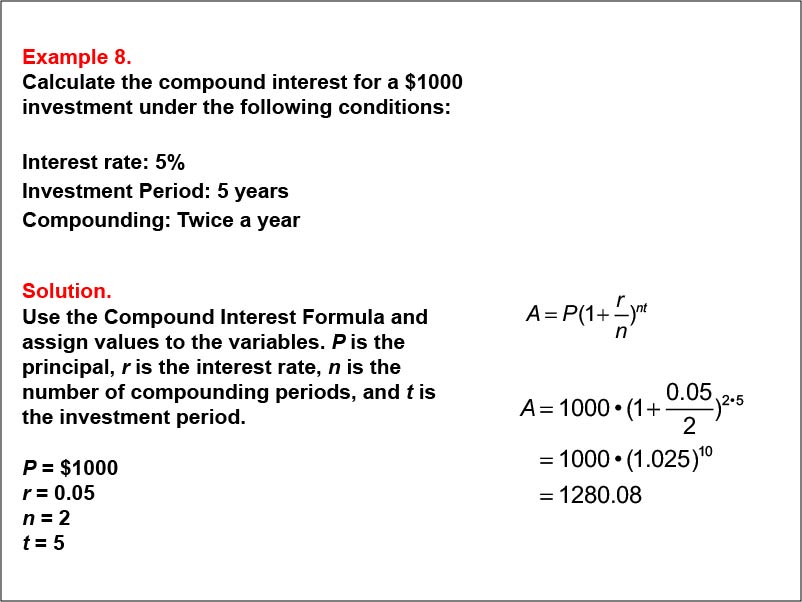
Display Title
Math Example--Math of Money--Compound Interest: Example 8
Display Title
Math Example--Math of Money--Compound Interest: Example 8

Topic
Math of Money
Description
This example calculates compound interest for a $1000 investment with a 5% interest rate, compounded semi-annually over 5 years. Using the formula A = P(1 + r/n)nt, where P = 1000, r = 0.05, n = 2, and t = 5, the final amount is $1280.08.
Compound interest is fundamental in financial mathematics, illustrating how investments grow over time. This example highlights semi-annual compounding, showing how different frequencies impact returns. Understanding these variations helps students grasp the practical applications of compound interest in real-life scenarios.
Multiple examples are crucial for students to fully understand compound interest. They allow students to compare results and see how changes in variables affect outcomes, enhancing their analytical skills and comprehension.
Teacher Script: "Let's calculate compound interest with semi-annual compounding on a $1000 investment at a 5% rate for 5 years. Notice how this affects your total return compared to annual compounding."
For a complete collection of math examples related to Compound Interest click on this link: Math Examples: Compound Interest Collection.
| Common Core Standards | CCSS.MATH.CONTENT.7.RP.A.3, CCSS.MATH.CONTENT.HSF.LE.A.1, CCSS.MATH.CONTENT.HSF.IF.C.8.B |
|---|---|
| Grade Range | 8 - 12 |
| Curriculum Nodes |
Algebra • Exponential and Logarithmic Functions • Compound Interest |
| Copyright Year | 2013 |
| Keywords | interest, compound interest, math of money |